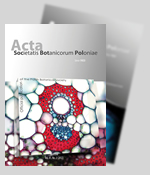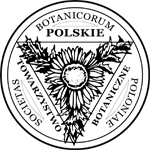Abstract
The morphology of pea (Pisum sativum L. cv. Hamil.) pollen grains was studied after adding zinc to the substrate in doses of. 0, 1, 500 and 1000 mg/pot. The observations were carried out using both light and scanning electron microscopy. The largest pollen grains were found at a dose of 500 mg/pot. Approximately 10% of the grains with such abnormalities in sporoderm structure as various types of swellings, mostly ring-shaped, were found under high concentrations of Zn (500 and 1000 mg/pot). The greatest number of deformed grains (over 40%), deeply plicated or strongly flattened, were observed at the dose of 1000 mg Zn. All of the described deformations related to excess Zn are documented photographically.
Keywords
pollen grain morphology; anomalies; Pisum sativum L. cv. Hamil.; zinc







